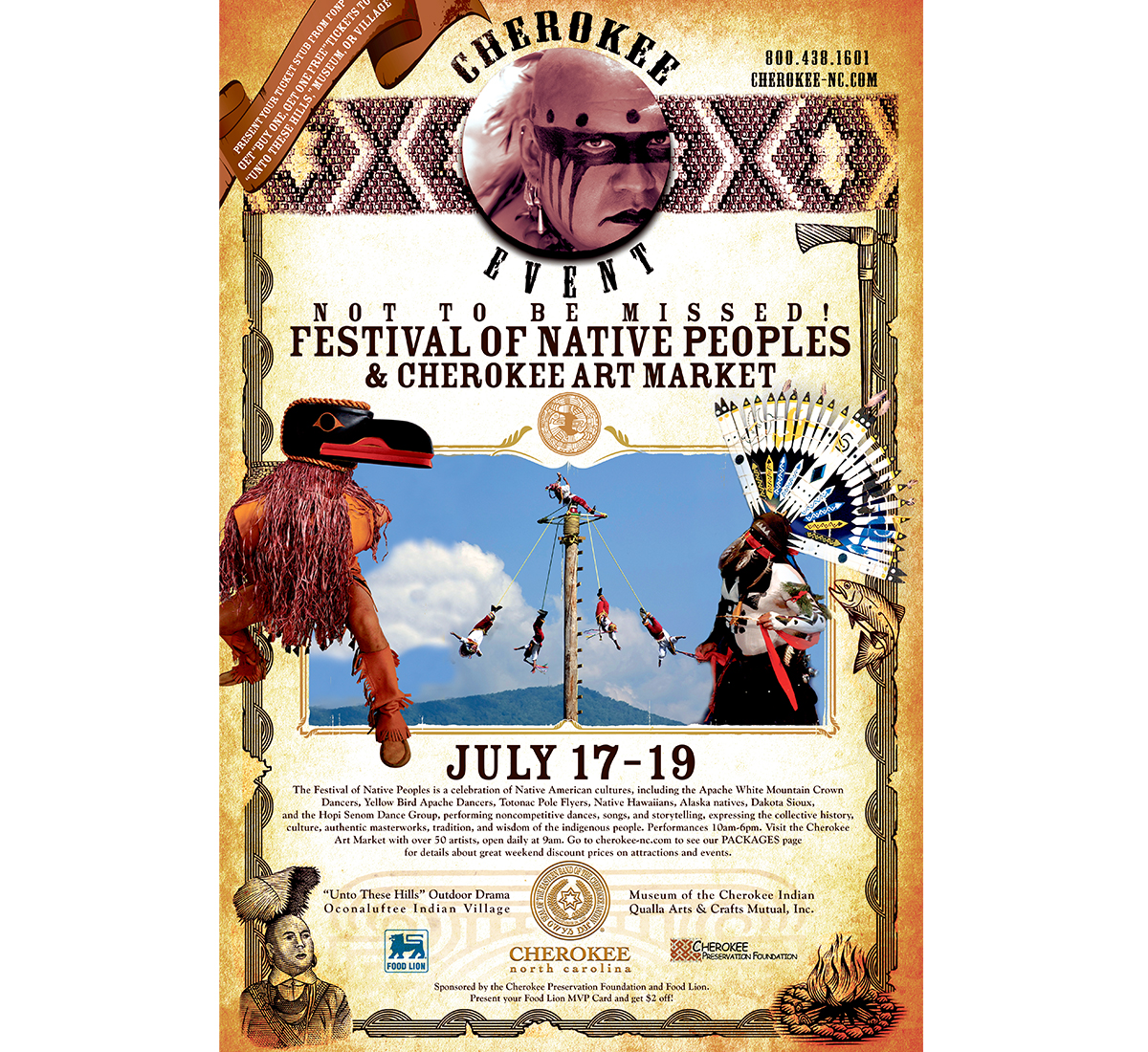By Jeff Goss, President

The Apache, the Bad River Chippewa, the Sioux, the Chickasaw, the Choctaw, the Creek, the Crow, the Cherokee, the Ottawa, Hopi, Miccosukee, Pawnee, Seneca, the Osage, Tulalip, Samish, Squaxin, the Zuni, Totonac, Git Hoan, Hälau Palaihiwa O Kaipuwai.
We know name-dropping is in bad form, but we had to share a few of the tribes who visited and performed at the Festival of Native Peoples in Cherokee, North Carolina.
As one of the ad messages says, “The last time this many Native American Tribes got together, the federal government was very nervous.”
The festival featured a colliding of cultures with ceremonial dance and regalia, all of which have deep religious, spiritual and significant meaning. Before the festival began, we were fortunate enough to visit the Apache, just one of the many tribes that attended the festival, and gain a deeper understanding of their culture.
On our way up to the high plains desert of San Carlos, Arizona, where national records for trophy elk and grizzly remain unbroken, we drove through the midplains dotted with grazing Apache-owned Hereford cattle and flanked with rugged red rock mountains and by the ancient mystical Apache caves inhabited by the spirits.
These sacred Apache caves high in the limestone cliffs began their formation with some natural crevasses and were hand-hewn over a brave’s lifetime from young adulthood for his return someday after the ceremonial Crown Dance to lay to rest their handcrafted crowns through which they spoke to the spirits.
Crown Dancing is a very old and sacred dance tradition of the Apache, as old as the Apache themselves. According to Apache belief, the dance was taught to the Apaches by the mountain spirits as a means of healing. The Crown Dancers are the Ga’an, or mountain spirits. Apaches believe that Usen, the Creator, sent the Ga’an to the Apache to teach them to live in harmony.
There are five Crown Dancers, four masked dancers representing the directions of north, south, east, and west. The fifth dancer is known as the clown, who protects the others by driving away evil spirits with the sound of his humming bull-roarer, a thin piece of wood suspended from a string and swung in a circle.
The dancers decide what symbols to put on their crowns. Symbols often honor forms in nature, and many crowns include the Apache cross to signify the four sacred directions. Some crown headdresses are adorned with eagle feathers, because the eagle is sacred to the Apache. Lightning, another sacred symbol, is often painted on the bodies of Apache Crown Dancers.
The dancers are not allowed to talk to one another, so they communicate with their sticks during the dance. Only properly trained men can dance the Crown Dance. Crown Dancers play an important part in many Apache ceremonies such as the Sunrise Ceremony, which commemorates the growth of a girl to womanhood. The dance is also performed in healing ceremonies and as a social dance.
The ceremony would take four days to complete because of the significance of the number 4.
In addition to healing and cleansing ceremonies the Ga’an dancers are instrumental in preparing the grounds for the coming-of-age ceremony for young Apache girls just coming into womanhood. Women also had a major role in the lifestyle of the Apache people from participating in warfare to being medics for the warriors to planning battles. Women were often responsible -- but unrecognized -- for others successes.
There are many versions and interpretations of Native American cultural traditions and customs, even within the tribe. I personally believe this is due to the federal government’s actions of removing them from their lands and punishing them for practicing their customs and language in an effort to destroy their culture and assimilate them into the Western culture. For this reason I want to reference the source for this description and meaning to The Apache Indian Crown Dance Ceremony: Indian Country Today and The World of Dance and Music.

